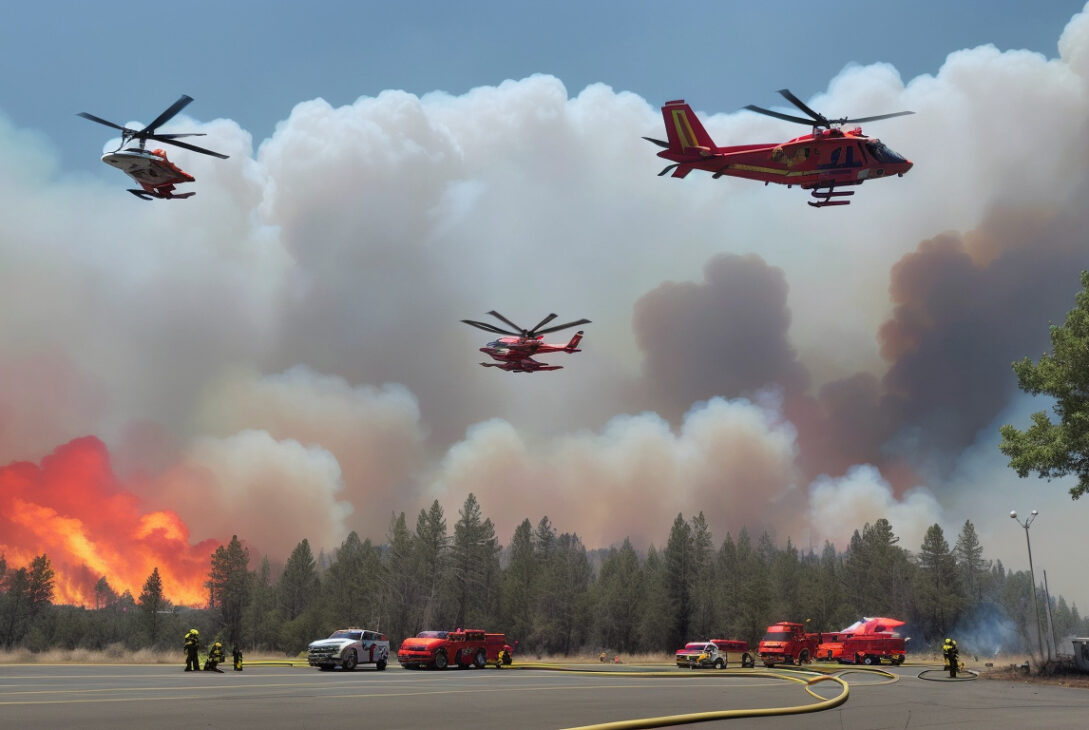Marin Firefighters Explore Cutting-Edge Mini-Aircraft Technology for Emergency Response
Mill Valley, CA – On Monday, July 21, 2025, Marin County firefighters and emergency responders gathered at Hauke Park in Mill Valley for a captivating demonstration of a new electric ultralight aircraft, showcasing innovative aviation technology that could transform emergency operations in the region.
The aircraft, developed by Palo Alto-based company Pivotal, is a compact single-seat vehicle weighing just 348 pounds and standing approximately 6.5 feet tall. Powered by eight electric propellers, it boasts vertical takeoff and landing (VTOL) capabilities along with an emergency parachute for added safety. The machine emits a low hum reminiscent of a leaf blower as it lifts off vertically, a feature clearly demonstrated by pilot Tim Lum during the event.
With a top speed of 63 miles per hour and a flight range of up to 20 miles, the aircraft offers operators the ability to quickly reach difficult terrain. Remarkably, it contains only 18 moving parts, a design innovation that surprised pilot Lum. The aircraft can be recharged by plugging into a standard wall outlet, requiring approximately 75 minutes for a full charge. It also features detachable wings, making it compact enough to be stored in a trailer, and is powered by readily portable batteries during field operations.
Presenting this technology to Southern Marin, Tiburon, and broader Marin County fire agencies, Pivotal sought feedback on potential emergency applications. Spokesperson Heidi Groshelle noted, "People are starting to say, what is this? How could we use it? What advantages does it offer to our operations?"
Pivotal’s sales executive Greg Lary highlighted the aircraft’s potential in emergency medical situations, particularly where challenging geography slows traditional ambulance response times. Significantly, the aircraft requires no runway for operations and does not mandate a pilot’s license, potentially easing deployment barriers.
Firefighters at the neighboring station engaged with a virtual reality flight simulator, donning VR glasses to experience flying the ultralight over simulated landscapes. This immersive training tool helped responders better understand the aircraft’s controls and capabilities.
Southern Marin Fire Protection District Chief Chris Tubbs expressed cautious optimism, noting the technology’s promise for search-and-rescue and wildfire reconnaissance missions. "If there is a wildfire, we want to get aircraft in the air very quickly and get a sense of the perimeter, where the fire is traveling, and how fast—it can be very valuable," said Tubbs. He added that while the aircraft may be less suited for medical transports, its rapid deployment for gathering critical situational data is promising.
Marin County Fire Chief Jason Weber also attended the demonstration, praising the aircraft as an impressive emerging technology likely to be operational in the near future. He acknowledged challenges such as the need for open landing areas and the current 20-minute flight limit but affirmed ongoing development to address these constraints.
Board member Clifford Waldeck of the Southern Marin Fire Protection District remarked on the potential benefits for paramedic accessibility, especially given Marin County’s aging population. However, he emphasized the importance of thoroughly vetting logistics including storage, training requirements, and resource allocation before integration.
The ultralight aircraft comes with a base price of $190,000, with Pivotal accepting $9,000 deposits for units slated for delivery later this year.
As Marin fire agencies continue evaluating this pioneering technology, the demonstration offered a glimpse into the evolving future of emergency response vehicles—compact, electric, and designed to enhance rapid access to challenging locales. For local firefighters and paramedics, the question now turns to how best to integrate such innovations into operational strategies to improve community safety and disaster responsiveness.
— Reporting by Cameron Macdonald, Marin Independent Journal
Email: cmacdonald@marinij.com









